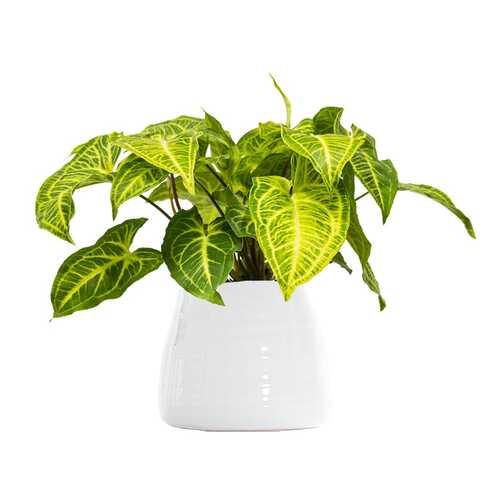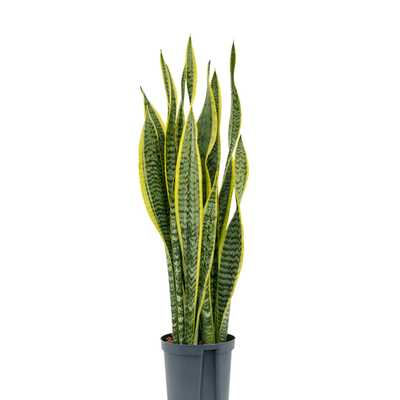Call US : 989124548005
Spathiphyllum
0 USD
Short Description:
If you are an apartment plants enthusiast, you are well acquainted with Spathiphyllum. The plant features glossy, spear-shaped leaves and typically grows to a height of 1-2 feet.Peacelily
Spathiphyllum’s overall features:
If you are an apartment plants enthusiast, you are well acquainted with Spathiphyllum.
The plant features glossy, spear-shaped leaves and typically grows to a height of 1-2 feet.
The Spathiphyllum, also known as Peace Lily, Sensation Plant, Spathe Flower and White Sails, is a tropical plant. The perennial herbaceous plant with evergreen leaves produces beautiful white flowers, which last 4 to 10 weeks.
Due to its air-purifying qualities, low light tolerance, compatibility with indoor temperatures and its aesthetic appeal, the Spathiphyllum is a popular choice for apartment dwellers.
Maintaining this lovely plant requires understanding its unique needs regarding water, sunlight, soil type, and composition. So, here is a short yet comprehensive guide for you to maintain right conditions for your plant.
Origin
The main birthplace of this flower is the tropical regions of the US, Colombia, and Southeast Asia. Spathiphyllum belongs to the Araceae family.
Light requirements:
To provide adequate light conditions for the Spathiphyllum, you must consider its placement in relation to seasons. This plant requires sunlight to thrive, but direct exposure to intense sunlight during hot summer days can result in leaf burns. Therefore, place the plant in a location with partial shade during summer. Conversely, insufficient light during winter can hinder the plant's ability to flower. In such cases, you can expose the plant to direct sunlight for several hours in the morning.
The Spathiphyllum adores bright but indirect light. Place the plant near an east or south-facing window where it can receive warm morning light without being exposed to direct sunlight during the midday. Additionally, it has the ability to thrive even in environments devoid of natural sunlight, such as rooms lacking windows or illuminated solely by artificial fluorescent light.
The Spathiphyllum can cope with moderate to low light conditions. Insufficient ambient light can lead to leaf twisting, discoloration, thinning, reduced flowering, and overall plant weakness.
Watering:
For optimal maintenance of a Spathiphyllum, it's crucial to achieve balanced watering. You should avoid allowing the plant's soil to become completely dry.
To determine when to water, check the moisture level of the soil surface in the pot. When the top 1.5 cm of soil begins to dry out, it's an indication that it's time to water the plant.
However, watering practices differ between summer and winter. During hot summer days, the plant may require more water due to increased warmth. Remember that both dehydration and excessive watering can harm the plant—dehydration causes dryness, while overwatering leads to leaf rot.
Ideally, use chlorine and fluoride-free water at room temperature. If using tap water, you can let it sit for a day to allow chlorine and fluoride to dissipate.
For watering, aim to keep the soil consistently moist without overwatering. The plant can tolerate periods of dryness but prolonged lack of water may result in browning leaves.
The plant requires regular watering, especially during the summer months. The potting soil should be kept consistently moist but not saturated. Excessive watering can lead to wilting leaves, yellow leaves, burning, and blackening of leaf edges.
The watering frequency may also vary depending on the light conditions. In brighter environments, the plant will require more frequent watering compared to areas with lower light levels.
Proper Soil:
Choosing the right soil is essential for providing optimal growing conditions for the Spathiphyllum. Avoid using soil that is unsuitable for its roots, as it can impede growth and flowering.
Here are two suggested soil compositions for this plant:
Mixture of perlite, leaf soil, and peat
Combination of leaf soil, perlite, and cocopeat
Since the plant's roots are sensitive to excessive moisture, it's important to ensure good drainage in the soil. You can achieve this by creating drainage holes in the pot to prevent water from accumulating.
To ensure the healthy growth and to prevent delayed flowering and leaf shrinkage, it's important to provide sufficient nutrients in the soil. The best time to fertilize is during spring and summer.
Opt for a balanced fertilizer that contains iron and magnesium as the Spathiphyllum is sensitive to deficiencies of these elements. Iron and magnesium deficiency can lead to yellow leaves.
Humidity and Temperature:
The typical temperature in apartments is OK and there seems to be no need to make significant changes to the temperature. The plant naturally grows in tropical regions with a temperature between 20°C and 26°C. It can withstand temperatures ranging from 13°C to 30°C. However, it is important to note that exposing the plant to extreme temperatures beyond this range can impede its growth and lead to a decline in its overall health.
The Spathiphyllum thrives in humid environments, so it's important to maintain adequate moisture levels for its optimal growth.
If your home experiences dry periods throughout the year, you can increase humidity by using a humidifier or misting the surrounding air with water. Placing a tray filled with water beneath the plant pot can also help create a more humid microenvironment. Another method to promote moisture is using pebble trays.
Note:
Keep in mind that the plant is toxic if touched or eaten by humans. It contains
insoluble calcium oxalate crystals, which can lead to severe discomfort and inflammation in the mouth when chewed or swallowed. So, try to keep the pets away as well.
Seek Expert Advice:
If you have any specific concerns or issues with your plant, it's advisable to consult a flower and plant expert. You can contact us for some professional advice.
Brief Overview:
Botanical Name: Spathiphyllum
Family: Araceae
Plant’s classification: Ornamental houseplant
Requirements: Bright indirect light, well-draining soil, warm humid places
| Colors : | Natural |
| Height : | 35cm, 50cm |
| Pot (Liter) : | 4, 7 |
Product Reviews
Similar Products
List of similar products that you can see

Yucca’s
0 USD

Yocca
0 USD

Zamioculcas Zamiifolia
0 USD

Syngonium’s
0 USD

Spathiphyllum
0 USD

Schefflera
0 USD

sansevieria
0 USD

Pothos Silver Splash
0 USD

Pothos adanson
0 USD

.jpg)
.jpg)
.jpg)
